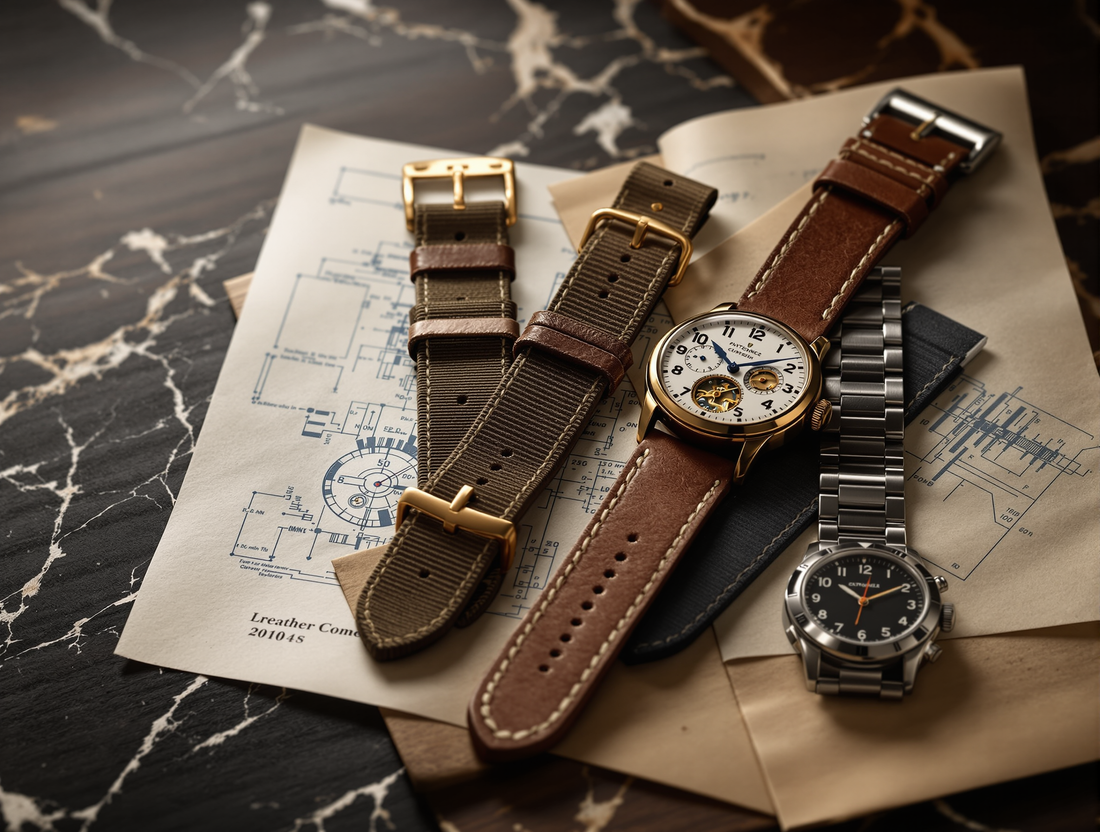
10 Fascinating Historical Facts About Watch Straps
Share
Discover 10 fascinating historical facts about watch straps – from military NATO origins to NASA missions, Rolex innovations, and modern luxury design.
We often think of a watch strap as just a simple accessory. But throughout history, straps have carried stories of war, innovation, exploration, and style. Here are ten intriguing facts that prove a strap is much more than just a band around your wrist.
1. Military Origins of the Wristwatch
In the late 19th century, soldiers needed a practical way to keep pocket watches secure during combat. Leather straps with welded lugs turned pocket watches into the first true wristwatches.
2. Rolex and the Oysterflex Revolution
Rolex introduced the Oysterflex strap as a high-tech alternative to metal bracelets. With a titanium-nickel blade hidden inside, it delivers the durability of steel with the comfort of rubber.
3. NATO Straps From the British Army
In 1973, the UK Ministry of Defence created the iconic NATO strap. Its clever design kept a watch secure even if one spring bar failed, making it a trusted choice for soldiers.
4. From Pockets to the Wrist
Before straps, men mostly carried pocket watches. In the early 20th century, wrist straps became common—first considered “feminine,” then quickly adopted by men, especially during World War I for practicality.
5. NASA and Velcro Straps
During the Gemini and Apollo missions, NASA astronauts used Velcro watch straps. These allowed them to wear timepieces securely over bulky space suits. A simple material became part of space history.
6. Cartier Turned Straps Into Fashion
Cartier was among the first to treat straps not just as functional, but as luxury fashion. Their elegant leather bands transformed watches into jewelry pieces—especially popular with women.
7. Seiko and the Rise of Rubber
In the 1960s, Seiko popularized rubber straps for its dive watches. Resistant to water and pressure, they became the go-to choice for professional divers around the world.
8. Panerai’s Naval Heritage
In the 1930s, Panerai supplied oversized watches with thick leather straps to Italian Navy divers. These robust designs were engineered for survival in extreme underwater missions.
9. Quick-Release Systems Arrived Late
Watchmakers experimented with interchangeable straps in the 1950s, but true quick-release spring bars only became mainstream in the 2000s— changing how we swap straps today.
10. Straps Worth More Than Watches
In the luxury world, a premium strap from Rolex, Omega, or Panerai can cost more than an entry-level watch. Straps have become symbols of craftsmanship, refinement, and status.
Conclusion
A watch strap is more than just a way to fasten your watch—it’s a chapter of history on your wrist. From battlefields to space missions, straps have played a role in shaping style and technology. Ready to choose your own? Discover our collections of rubber straps, leather straps, and metal straps to find the perfect match for your timepiece.
